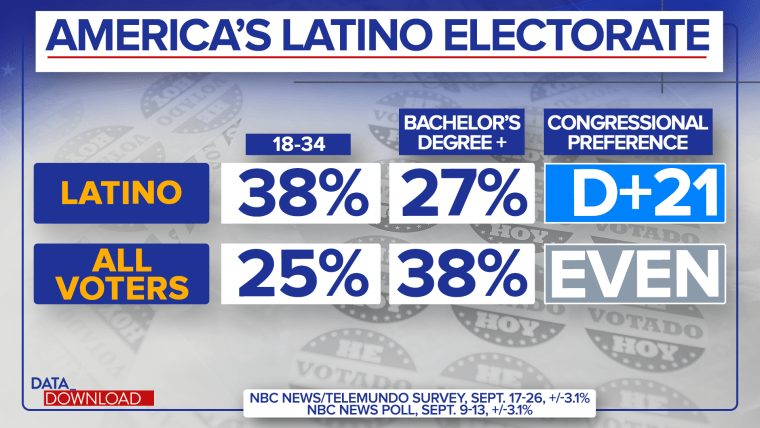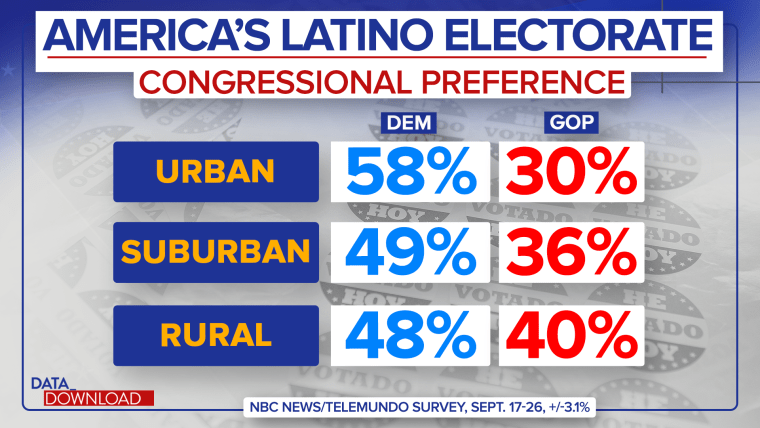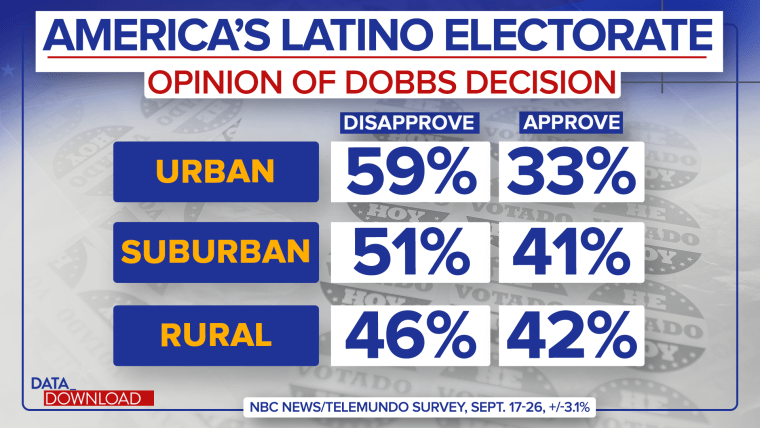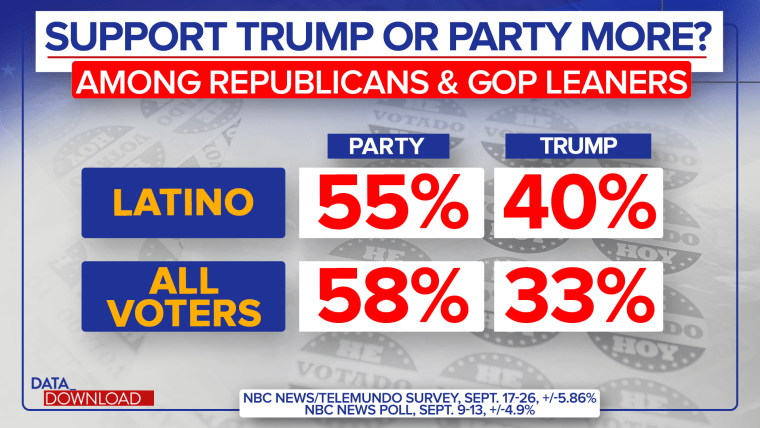In the last few elections cycles, Latino voters have become a focus among analysts and campaigns, a fast-growing bloc seen as a key to understanding where the nation’s electorate may be headed. And a new NBC News/Telemundo poll shows how the voter segment looks different from the electorate overall — and how it may be starting to follow some of the larger trends in the broader American vote.
The size and power of the Latino vote has grown sharply over the last decade. In 2000, Latino voters accounted for about 7% of all the votes cast in the presidential race, according to exit polls. By 2020, their share of the votes cast had nearly doubled, to 13%. That was enough to tie it with the African American vote in that election.
And comparing this NBC News/Telemundo poll to the most recent NBC News survey shows how different the Latino vote looks in some crucial ways.

To start with, the data suggests the Latino vote will be increasingly important in the years to come. It’s not only growing as a percentage of the whole, but it’s also young. More than a third of Latino voters, 38%, are in the 18 to 34 age group in this poll. Only a quarter of the overall electorate in the last NBC News poll was in that age group.
Currently, Latino voters are less likely to have college degrees (27%) than voters in the electorate overall (38%) — although the gap is closing.
And Latino voters, who traditionally lean Democratic, still seem to be following that pattern this fall. The new NBC News/Telemundo poll shows Latino voters favor having a Democratic Congress in 2023 by a whopping 21 percentage points. Voters in the most recent NBC News poll were evenly divided on the 2022 “generic ballot.”
Some stark differences show a distinct voting bloc within the electorate. But dig further into the numbers and you’ll see a familiar political split among Latinos — a divide between urban and rural voters.
For instance, Latino voters in urban, suburban and rural communities look quite different on the generic ballot.

Democrats do very well among urban Latinos, who favor a Democratic Congress in 2023 by 28 percentage points. But the Democratic advantage drops sharply among Latinos in the suburbs, shrinking to a smaller 13-point margin. And out in rural areas, the support for a Democratic Congress gets down to single digits with Latino voters, to a mere 8 points.
Granted, Democrats still hold an edge among Latinos across the board in all geographical sets, but that’s a difference of 20 percentage points between urban and rural Latinos. The numbers are a softer echo of the massive swing in the electorate overall between urban areas, which are usually heavily Democratic, and rural ones, which tend to be deeply Republican.
And the urban/rural differences among Latino voters extend beyond the generic ballot. The split also appears in attitudes toward the Supreme Court’s decision in June to overturn Roe v. Wade and remove the constitutional protection for abortions.

Latinos living in urban areas disapprove of the court’s ruling by a wide margin — 26 percentage points. The numbers are a bit closer among Latinos living in suburban areas, who disapprove of the court’s decision by 10 points. And among Latinos in rural areas, the disapproval all but vanishes — they disapprove of the ruling by just 4 points.
Taken together, those numbers on the generic ballot and abortion suggest rural Latinos aren’t just less Democratic; they’re also more culturally conservative than their urban counterparts, again a hallmark of the rural vote in the electorate overall. That suggests there could be room for growth for the GOP among rural Latinos.
And where the GOP is concerned, one other point in the data shows how Latinos are different. Latino Republicans are more likely than Republicans as a whole to be supporters of former President Donald Trump than supporters of the Republican Party.

Among Latino Republicans, 55% consider themselves to be supporters the party, while 40% consider themselves to be supporters of Trump. That’s a solid 15-point edge for “party Republicans,” but it’s still smaller than the advantage among Republicans overall. Among Republicans as a whole, 58% consider themselves to be supporters of the party, while just 33% consider themselves to be supporters of Trump, a 25-point gap.
What this all means, in the long run, isn’t clear. No voter bloc is completely stable. They change over time as the parties and the political environment evolve.
And when you look closely at the latest NBC News/Telemundo poll, that seems to be the story among Latino voters, as well. The numbers show that the Latino vote is young and still solidly Democratic but that it isn’t a monolith and it may be in motion.